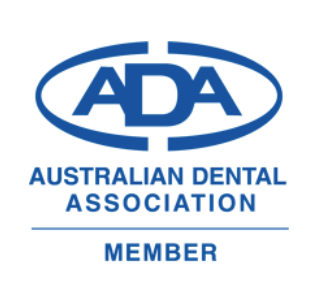DENTAL FILLINGS & RESTORATIONS AT BROADVIEW DENTAL CLINIC – REPAIRING SMILES WITH CARE
At Broadview Dental Clinic, we know that even with the best brushing and flossing habits, teeth can sometimes develop cavities or minor damage. When this happens, fillings and restorations play a vital role in repairing the tooth, preventing further decay, and preserving your smile. Our caring team is here to make the process simple, gentle, and effective, so you can feel confident that your teeth are healthy and protected.
WHAT ARE DENTAL FILLINGS?
A dental filling is a treatment used to repair a tooth that has been affected by decay, wear, or minor damage. When a cavity forms, the decayed portion of the tooth must be removed and replaced with a durable material that restores both strength and function. Fillings not only stop cavities from getting worse but also help maintain the natural appearance of your smile.
At Broadview Dental Clinic, we use modern filling materials such as tooth-coloured composites, which blend seamlessly with your natural teeth. This means your restoration will be strong, long-lasting, and practically invisible when you smile or speak.
WHY MIGHT YOU NEED A FILLING?
There are several reasons why a filling or restoration may be recommended:
- To treat cavities (tooth decay) – The most common reason for fillings is repairing areas where bacteria have eroded the tooth’s surface.
- To repair worn or chipped teeth – Fillings can restore shape and strength to teeth damaged by grinding, habits, or everyday wear.
- To replace old fillings – Older amalgam or composite fillings may eventually need to be replaced for improved function or appearance.
- To protect against further damage – Restorations help prevent small problems from becoming larger ones, saving you from more complex treatments later.
By treating these issues early, you can maintain your natural teeth for as long as possible and avoid unnecessary discomfort.
THE DENTAL FILLING PROCEDURE – WHAT TO EXPECT
We understand that the idea of having a filling can make some patients anxious. That’s why our team always explains the process clearly and ensures your comfort throughout.
- Assessment – During your appointment, we examine the tooth and may take an X-ray to assess the extent of the decay or damage.
- Numbing the Area – To keep you comfortable, a local anaesthetic is used to numb the tooth and surrounding area.
- Removing the Decay – The affected portion of the tooth is gently cleaned out, leaving only healthy structure behind.
- Placing the Filling – The cavity is filled with a tooth-coloured composite or other suitable material. The material is carefully shaped to match your natural bite and then hardened with a special light.
- Final Adjustments – We check the filling to ensure it feels smooth and natural, making adjustments if needed so that your bite is comfortable.
The procedure is quick, typically completed in a single visit, and most patients find it far more comfortable than they expected.
CARING FOR YOUR FILLING
With proper care, modern fillings can last many years. To protect your restoration, it’s important to maintain good oral hygiene — brushing twice a day, flossing daily, and attending regular dental check-ups. Avoiding excessive sugar, limiting very hard foods, and addressing habits like grinding can also help prolong the life of your filling.
At Broadview Dental Clinic, we always check the condition of your fillings during routine visits, making sure they continue to provide strong, reliable protection for your teeth.
WHY CHOOSE BROADVIEW DENTAL CLINIC FOR FILLINGS & RESTORATIONS?
What sets us apart is our commitment to gentle care and long-lasting results. With over 40 years of experience, Dr Sassan Chegini and our dedicated team combine skill with compassion, ensuring that every filling is placed with precision and care. We use advanced materials and techniques to achieve restorations that are not only durable but also natural in appearance.
Most importantly, we take the time to listen to your concerns, explain your options, and make sure you feel comfortable at every stage of treatment.
RESTORING HEALTH, PROTECTING SMILES
Dental fillings and restorations are about more than repairing teeth — they are about preserving your oral health and giving you peace of mind. At Broadview Dental Clinic, we are proud to provide treatments that protect your smile, restore your confidence, and help you enjoy life without discomfort.
If you think you may need a filling, or if you’re concerned about an old restoration, our friendly team is here to help. Together, we can ensure your teeth stay healthy, strong, and beautiful for years to come.
Restore your smile with durable, natural-looking fillings at Broadview Dental Clinic.














